بذور الفجل (مرفق: بذور الفجل، ديكولو)
[الاستخدام الطبي] هذا المنتج هو البذور الناضجة من نبات الفجل الصليبي.
[الطبيعة والنكهة والخطوط الطولية] لاذع، حلو، مسطح. يدخل في خطوط الطول للطحال والمعدة والرئة.
[الفعالية] هضم الطعام وحل التراكمات والتخلص من البلغم وخفض تشي.
[التطبيق السريري] 1. يستخدم للأعراض مثل تراكم الطعام الراكد، وامتلاء المعدة، والتجشؤ وابتلاع الحمض، وآلام البطن والإسهال، وانتفاخ البطن وعدم الراحة.
بذور اللفت قادرة على التخلص من تراكم الطعام والركود والانتفاخ. وكثيراً ما يتم دمجها مع الليوكو والزعرور والشعير وغيرها للمساعدة في الهضم. كما يتم دمجها مع البينيليا وقشر اليوسفي وغيرها لتعزيز قدرتها على تقليل عسر الهضم وتنسيق المعدة. وفي حالة الرطوبة، يمكن إضافة بوريا كوكوس؛ وفي حالة الحرارة، يمكن إضافة كوبتيس وفورسيثيا. وفي حالة نقص الطحال، يمكن إضافة أتراكتيلودس ماكروسيفالا.
2. يستخدم لعلاج السعال والربو مع البلغم المفرط.
يتمتع هذا المنتج بتأثير كبير جدًا في تقليل تشي وتذويب البلغم، وغالبًا ما يتم استخدامه مع بذور الخردل الأبيض وبذور البريلا وما إلى ذلك.
[اسم الوصفة] بذور اللفت، بذور الفجل، بذور الفجل المقلية (للقلي والحرق قليلاً)
[الجرعة العامة والاستخدام] ثلاثة إلى خمسة تشيان، ثم تغلي وتؤخذ.
[دواء إضافي] 1. الرابين: سيقان وأوراق الفجل. طبيعته ونكهته مريرة ودافئة. يعمل على تطهير الحلق وتهدئة المعدة، ومناسب لالتهاب الحلق والإسهال الأحمر والأبيض وسوء الهضم. الجرعة العامة هي خمسة تشيان إلى واحد تايل، مغلي وتناول.
2. ديمنجلو: جذر الفجل القديم الذابل. وظيفته: إدرار البول والتورم، مناسب للوجه الأصفر المتورم، الامتلاء والضيق في الصدر والحجاب الحاجز، الإسهال الناتج عن تراكم الطعام، الزحار والكتل. الجرعة العامة من ثلاثة إلى خمسة سنتات.
[أمثلة على الوصفات الطبية] يحتوي مغلي Sanzi Yangqin (Han Shi Yi Tong) على بذور الفجل وبذور الخردل الأبيض وبذور الريحان. يعالج كبار السن الذين يعانون من فرط تشي والبلغم والتنفس المفرط والكسل.
هذا المنتج عبارة عن بذور مجففة وناضجة من نبات الفجل الصليبي Raphanus sativus L. عندما تنضج الثمار في الصيف، يتم حصاد النباتات وتجفيفها تحت أشعة الشمس. يتم فرك البذور لإزالة الشوائب ثم تجفيفها تحت أشعة الشمس.
【شخصية】
هذا المنتج بيضاوي الشكل أو بيضاوي الشكل، مسطح قليلاً، طوله 2.5~4 مم وعرضه 2~3 مم. السطح بني مصفر أو بني محمر أو بني رمادي. يوجد نقش دائري بني غامق على أحد الأطراف وعدة أخاديد طولية على أحد الجانبين. غلاف البذرة رقيق ومقرمش، به فلقتان، أصفر-أبيض وزيتي. الرائحة خفيفة، والطعم خفيف، مرير قليلاً ونفاذ.
【تعريف】
(1) مسحوق هذا المنتج من الأصفر الفاتح إلى البني. تكون خلايا غلاف البذور على شكل صفائح، وهي صفراء فاتحة أو برتقالية أو صفراء-بنية أو حمراء-بنية. السطح مضلع أو مضلع طويل، بقطر حوالي 15 ميكرومتر. غالبًا ما تتداخل مع الخلايا الهايبوثيليه الكبيرة لغلاف البذرة. يمكن رؤية العديد من أنواع الخلايا. ظل زاوي أو مضلع طويل. سطح خلايا السويداء شبه مضلع، مع حبيبات مسحوقة غامضة وقطرات دهن وزيت. خلايا الفلقات عديمة اللون أو رمادية-خضراء فاتحة، بجدران رقيقة وحبيبات مسحوقة غامضة وقطرات دهن وزيت.
(2) خذ 1 جرام من مسحوق هذا المنتج، وأضف 30 مل من الأثير، وقم بتسخينه وتسخينه لمدة ساعة، وتخلص من سائل الأثير، وتبخر البقايا حتى تجف، وأضف 20 مل من الميثانول، وقم بتسخينه وتسخينه لمدة ساعة، ثم قم بالتصفية، وتبخر المرشح حتى يجف، وأضف 2 مل من الميثانول إلى البقايا ليذوب، كمحلول اختبار. خذ 1 جرام آخر من مادة طبية مرجعية من بذور اللفت وقم بإعداد محلول المادة الطبية المرجعية بنفس الطريقة. ثم خذ مادة مرجعية من ثيوسيانات الخردل وأضف الميثانول لعمل محلول يحتوي على 1 مجم لكل 1 مل كمحلول مرجعي. وفقًا لاختبار كروماتوغرافيا الطبقة الرقيقة (الفصل العام 0502)، قم بامتصاص 3~5 وحدات من كل من المحاليل الثلاثة المذكورة أعلاه، وضعها على نفس لوحة الطبقة الرقيقة Trichosanthes G. استخدم الطبقة العلوية من أسيتات الإيثيل - حمض الفورميك - الماء (10:2:3) المحلول عبارة عن عامل تطوير، افرده وأخرجه وجففه وافحصه تحت ضوء الأشعة فوق البنفسجية (365 نانومتر). في كروماتوغرام المنتج المختبر، تظهر بقع فلورية من نفس اللون في المواضع المقابلة لكروماتوغرام المادة الطبية الضابطة وكروماتوغرام المادة المرجعية؛ رش 1% فانيليا في محلول إيثانول حامض الكبريتيك 10% وسخن حتى تظهر البقع واضحة وبقع من نفس اللون.
【يفحص】
يجب ألا يتجاوز محتوى الرطوبة 8.0% (الطريقة 4 من القاعدة العامة 0832)
يجب ألا يتجاوز إجمالي محتوى الرماد 6.0% (القاعدة العامة 2302)
لا يجوز أن تتجاوز نسبة الرماد غير القابل للذوبان في الأحماض 2.0% (الفصل العام 2302).
【يستخرج】
يتم تحديدها وفقًا لطريقة النقع الساخن بموجب تحديد المواد القابلة للتحلل في الكحول (الفصل العام 2201)، باستخدام الإيثانول كمذيب، بما لا يقل عن 10.0%.
【تحديد المحتوى】
يتم التحديد وفقًا للكروماتوغرافيا السائلة عالية الأداء (الفصل العام 0512).
اختبار الظروف الكروماتوغرافية وملاءمة النظام: استخدم صمغ فينيل ألكيل ألكان كمواد مالئة؛ استخدم محلول حمض الأسيتيك الجليدي أسيتونتريل-3% (15:85) كمرحلة متحركة: طول الموجة للكشف هو 326 نانومتر. يجب ألا يقل عدد اللوحات النظرية عن 5000 بناءً على ذروة سينابين.
تحضير محلول المادة المرجعية: خذ كمية مناسبة من مادة ثيوسيانات الخردل المرجعية، ووزنها بدقة، وضعها في زجاجة قياس بنية اللون، وأضف الميثانول لعمل محلول يحتوي على 40 ميكروجرام لكل 1 مل، وسيكون لديك. تحضير محلول الاختبار: خذ حوالي 0.5 جرام من مسحوق هذا المنتج (مرر من خلال المنخل رقم 3)، ووزنه بدقة، وضعه في قارورة إيرلنماير مسدودة، وأضف 50% من الميثانول 70% بدقة، وأوقفه بإحكام، ووزنه، وقم بإجراء معالجة بالموجات فوق الصوتية (قوة 250 واط، تردد 50 كيلو هرتز) لمدة 30 دقيقة، واتركه يبرد، ووزنه مرة أخرى، وعوض الوزن المفقود بالميثانول 70%، ورج جيدًا، وقم بالتصفية، وخذ المرشح المتبقي، وضعه في زجاجة بنية اللون، وسيكون لديك.
طريقة التحديد: امتصاص 5u من كل من محلول المرجع ومحلول الاختبار بدقة، وحقنهما في جهاز الكروماتوجراف السائل، ثم القياس.
يتم حساب هذا المنتج كمنتج جاف، ويحتوي على سينابين، المحسوب على أنه ثيوسيانات سينابين (C16H24NO5·SCN)، والذي لا ينبغي أن يقل عن 0.40%.
قطع الشرب
【مختلقة)
قومي بإزالة الشوائب من بذور الفجل ثم اغسليها وجففيها ثم اهرسيها عند الاستخدام.
[الشخصية][التعريف][التفتيش][التسرب][تحديد المحتوى]
المواد الطبية نفسها.
اقلي بذور الفجل. خذي بذور الفجل النظيفة واقليها وفقًا لطريقة القلي الواضحة (القاعدة العامة 0213) حتى تنتفخ قليلًا. اهرسيها عند الاستخدام.
【شخصية】
هذا المنتج على شكل بذور الفجل، مع سطح منتفخ قليلاً، ولون أعمق، وملمس هش ورائحة عطرة قليلاً.
[التعريف] [التفتيش] [قياس محتوى الراشح]
المواد الطبية نفسها.
【الطبيعة والنكهة والاستوائية】
لاذع، حلو، مسطح. يعود إلى خطوط الطول في الرئة والطحال والمعدة.
[الوظائف والمؤشرات]
التخلص من الطعام والتخلص من التورم وخفض الطاقة وإخراج البلغم. يستخدم لعلاج ركود النظام الغذائي وتمدد المعدة والألم والإمساك والإسهال والصفير والسعال.
【الاستخدام والجرعة】
5~12 جرام.
【تخزين】
قم بتخزينه في مكان جيد التهوية وجاف لتجنب تكون العثة.
أين هي الأصول الرئيسية لبذور الفجل؟
يتم إنتاج بذور الفجل في جميع أنحاء البلاد، وخاصة في خبي، وخنان، وتشجيانغ، وهيلونغجيانغ وأماكن أخرى.
أين توجد الأجزاء الطبية الرئيسية من بذور الفجل؟
الأجزاء الطبية من بذور الفجل:
هذا المنتج عبارة عن بذور نبات الفجل الصليبي المجففة والناضجة Raphanus sativusL. يتم إنتاجه في جميع أنحاء البلاد. في الصيف، عندما تنضج الثمار، يتم حصاد النباتات وتجفيفها في الشمس، وفرك البذور وإزالة الشوائب، ثم تجفيفها في الشمس. هريس عند الاستخدام. بعد المعالجة، يمكن إنتاج بذور الفجل المقلية. البذور ذات الحبوب الكبيرة والممتلئة واللون البني المحمر هي الأفضل.
خصائص الأجزاء الطبية من بذور الفجل:
هذا المنتج بيضاوي الشكل أو بيضاوي الشكل، مسطح قليلاً، طوله 2.5~4 مم وعرضه 2~3 مم. السطح بني-أصفر أو أحمر أو رمادي-بني. عند ملاحظته تحت عدسة مكبرة، توجد أنماط شبكية دقيقة، ونقطة بنية داكنة مستديرة في أحد الأطراف، ونتوء يشبه النقطة البنية، والعديد من الأخاديد الطولية على جانب واحد. غلاف البذرة رقيق ومقرمش، مع فلقتين، أصفر-أبيض وزيتي. الرائحة خفيفة، والطعم خفيف، ومر قليلاً ولاذع. تلك ذات الحبوب الكبيرة والممتلئة واللون البني-الأحمر هي الأفضل.
كيف تم تسجيل بذور اللفت في الكتب التاريخية القديمة؟
تم تسجيل بذور الفجل لأول مرة في "ملحق المواد الطبية": "تُعرف عادةً بالفجل، ويمكنها أيضًا علاج أمراض الرئة والتقيؤ الدموي. كما تُطحن بذورها في الماء وتُؤخذ، وهي فعالة جدًا في علاج الريح والبلغم".
بذور اللفت، المعروفة أيضًا باسم بذور الفجل، تأتي من "باوكينج ماتيريا ميديكا": "طعمها لاذع، وبارد قليلاً، وغير سام.
بذور اللفت، والمعروفة أيضًا باسم بذور الفجل، تأتي من "Rihuazi Materia Medica": "اطحنها بالماء لإخراج الرياح والبلغم، واطحنها بالخل لتقليل التورم والسموم." "مجموعة المواد الطبية": "تقليل تشي لتخفيف الربو وعلاج البلغم والهضم وإزالة التورم وإفادة الجسم." يمكن أن يخفف من آلام الغازات والإسهال الشديد والطفح الجلدي. 91 "مجموعة ييلين": "عند استخدامها نيئة، يمكنها طرد الرياح والبلغم وتوسيع الصدر والحجاب الحاجز ودعم القرحة والطفح الجلدي؛ عند استخدامها مطبوخة، يمكنها تقليل تشي والقضاء على البلغم ومهاجمة التراكمات الصلبة وبعد العلاج الثقيل. "مواد طبية جنوب يونان": "الجزء السفلي من تشي واسع ومتوسط، يزيل التورم، ويزيل البلغم واللعاب، ويزيل الطعام، ويزيل ركود المنطقة، ويخفض البلغم، ويهدئ الصفير، ويهاجم ركود الجهاز الهضمي، ويعالج الكتل وآلام البطن الفردية."
"خصائص واستخدامات الدواء": "تناول الجنسنغ يسبب التورم، وإلا فإنه لن يزول.
«مختصر المواد الطبية»: «يذيب البلغم، ويزيل الريح، ويذهب الشر، ويثير التعرق.
الوظيفة والفعالية
الوظيفة الرئيسية لبذور الفجل هي إزالة الطعام والانتفاخ، وخفض تشي وتذويب البلغم.
ما هي الوظائف الرئيسية والتطبيقات السريرية لبذور الفجل؟
تستخدم بذور الفجل لعلاج ركود الطعام وانتفاخ البطن والألم والإمساك والركود والإسهال والبلغم والسعال والربو. بعد القلي، تكون الخصائص الطبية خفيفة وجيدة للتحويل إلى غاز.
البلغم والهضم والانتفاخ.
متلازمة تراكم الطعام وركود الطاقة الحيوية
·هذا المنتج هو مسحوق XinXing، والذي يستخدم لإزالة الطعام وحل التراكم، وهو جيد بشكل خاص في تعزيز تشي وتقليل الانتفاخ.
يمكن استخدامه لعلاج انتفاخ البطن والامتلاء والألم الناتج عن ركود تشي الطعام والإمساك أو ركود تشي والإسهال. يستخدم غالبًا مع الزعرور والشنكو وقشر اليوسفي.
إذا كان المريض يعاني من تراكم الطعام الراكد ونقص الطحال، يمكن إضافة Atractylodes macrocephala إلى العلاج أعلاه للقضاء على الفضلات وتغذية المريض في نفس الوقت.
إذا تم استخدامه لعلاج الزحار الناتج عن تراكم الطعام والزحار، فيمكن استخدامه بنفس طريقة استخدام Acosta وFructus Aurantii وRhubarb.
السعال والصفير بسبب البلغم وضيق الصدر وقلة الطعام
لا يمكن لهذا المنتج فقط القضاء على تراكم الطعام وتحفيز الشهية، بل يقلل أيضًا من البلغم وتخفيف السعال وخفض تشي وتخفيف الربو.
يمكن استخدامه لعلاج البلغم واللعاب الزائد والسعال والربو وضيق الصدر وخاصة لمن يعانون من تراكم الطعام، وكثيرا ما يستخدم بنفس طريقة استخدام بذور الخردل الأبيض وبذور الريحان.
دليل على انتفاخ البطن
الطعم اللاذع لهذا الدواء مفيد لتنشيط الطاقة وإزالة الانتفاخ. يمكن طحنه وتناوله نيئًا لتخفيف القيء الناتج عن الريح والبلغم.
الإسهال الشديد
·هذا المنتج لاذع وحلو وخفيف في طبيعته ونكهته. يعزز تشي ويخفض تشي وينظم تشي. يمكنه تنشيط تشي وعلاج الإسهال وتسكين الآلام الداخلية. (الإسهال: يشير إلى البراز السائل الذي يفرزه الشخص.)
يتطلب استخدام الطب الصيني التقليدي التمييز بين المتلازمات والعلاج السريري الفردي. لذلك، يرجى استشارة طبيب متخصص قبل تناول الدواء واستخدام الدواء بانتظام تحت إشراف الطبيب.
ما هي المستحضرات المركبة التي تحتوي على بذور الفجل؟
تتضمن المستحضرات المركبة التي تحتوي على بذور الفجل ما يلي:
سائل فموي من جيان إير شياوشي
تقوية الطحال والمعدة وتنظيم الطاقة والتخلص من الطعام، ويستخدم للأطفال الذين يعانون من عسر الهضم وقلة الشهية وانتفاخ البطن وسخونة اليدين والقدمين والتعرق والتعب التلقائي وعدم انتظام البراز وحتى فقدان الشهية والنفور من الأكل بسبب تلف الطحال والمعدة بسبب الأكل غير السليم.
حبوب جياو تشاو هوازهي
يمكن أن يساعد في الهضم وتنظيم تشي وتقليل التورم. يستخدم لعلاج ركود الأكل واضطراب الجهاز الهضمي وركود تشي وعدم الراحة والانتفاخ والامتلاء. حبوب شياوشي هواتان
يعمل على تنعيم تشي وتقليل النيكل وهضم الطعام وإخراج البلغم. يستخدم لعلاج أعراض تراكم الطعام المستمر وانتفاخ الصدر وضيقه والبلغم المفرط وقلة التغذية.
حبوب التانين
يدفئ ويغذي الطحال والكلى ويساعد على تحويل اليانج. يستخدم لعلاج السعال الناتج عن نقص اليانج في الطحال والكلى والبلغم الذي يسد الرئتين وضيق التنفس والصفير وبصق البلغم الأبيض والنفور من البرد والأطراف الباردة وآلام الظهر وانتفاخ البطن وقلة الطعام.
حبوب بوهي
يهضم ويوجه الركود ويوازن المعدة، ويستخدم في حالات ركود الطعام وانتفاخ البطن والقيء والألم وعدم الرغبة في الأكل.
كبسولات سانزي للسعال
يخفض تشي ويخفف السعال ويذيب البلغم ويزيل الطعام، ويستخدم في علاج متلازمة البلغم الرطب الذي يسد الرئتين، وتشمل الأعراض السعال والصفير أو البلغم في الحلق، وبصق البلغم الأبيض الرغوي أو اللزج، والبلغم المفرط، وضيق الصدر، وقلة الشهية، وآلام البطن، وما إلى ذلك؛ التهاب الشعب الهوائية المزمن (مرحلة الهجوم الحاد، النوع البسيط) ) الذين يعانون من المتلازمات المذكورة أعلاه.
التقدم البحثي الحديث في بذور الفجل
أظهرت الأبحاث الحديثة أنه يحتوي بشكل أساسي على الأحماض الدهنية: حمض الإيروسيك، وحمض اللينوليك، وحمض اللينولينيك، وستيرول بذور اللفت، و22-ديهيدروكامبستيرول، وما إلى ذلك. الزيوت المتطايرة: حمض بيتا هيكسينويك، وبيتا، وكحول فينيل واي ومكونات الزيوت المتطايرة الأخرى؛ كما يحتوي على الفجل والسينابين. وله وظائف مضادة للسعال، وطاردة للبلغم، وتنظيم حركة الجهاز الهضمي، وخفض الدهون في الدم وخفض ضغط الدم.
كيفية الاستخدام
الوظيفة الأساسية لبذور الفجل هي التخلص من الطعام والانتفاخات، وخفض الطاقة الحيوية وطرد البلغم. بشكل عام، تُستخدم قطع بذور الفجل، والتي يمكن غليها وتناولها داخليًا أو خارجيًا.
كيفية استخدام بذور الفجل بشكل صحيح؟
عند تناول مغلي بذور الفجل عن طريق الفم تكون الجرعة المعتادة من 5 إلى 129.
للاستخدام الخارجي، يتم طحن كمية مناسبة من بذور الفجل إلى مسحوق، ثم خلطها بالنبيذ الساخن ووضعها على المنطقة المصابة لعلاج الكدمات والجروح.
ملحوظة: عند تناول مغلي بذور الفجل عن طريق الفم، يجب تقليبه.
تتم معالجة بذور اللفت بطرق معالجة مختلفة لإنتاج بذور الفجل وبذور الفجل المقلية. بعد القلي، تسترخي الخصائص الطبية، وهي جيدة في خفض تشي وتقليل البلغم، والقضاء على الطعام وإزالة التورم. يجب أن يتم قليها للهضم. طرق التحضير المختلفة لها تأثيرات وتأثيرات مختلفة. يرجى اتباع تعليمات طبيبك بشأن الأدوية المحددة واستخدامها بحذر.
عادة ما يتم تناول بذور اللفت مغليًا أو مغليًا. كما يمكن تحويلها إلى مسحوق أو حبوب. ومع ذلك، فإن استخدام المواد الطبية الصينية يتطلب التمييز بين المتلازمات وعلاجها، ويجب استخدامها تحت إشراف ممارسي الطب الصيني المحترفين. لا ينبغي استخدامها حسب الرغبة، ناهيك عن الاستماع إلى وصفات الطب الصيني التقليدي والإعلانات.
التركيبات الطبية الصينية الشائعة هي كما يلي:
بذور اللفت مع بذور الريحان وبذور الخردل: بذور الفجل يمكن أن تقضي على الطعام وتزيل الانتفاخ، وتقلل من تشي وتذيب البلغم؛ بذور الريحان يمكن أن تخفف من السعال والربو، وتخفض تشي وتزيل البلغم، وترطب الأمعاء وتخفف الإمساك؛ بذور الخردل يمكن أن تدفئ الرئتين وتذيب البلغم وتبدد تشي. . إن الجمع بين الأدوية الثلاثة لا يدفئ الرئتين ويذيب البلغم، ويخفض تشي ويخفف السعال والربو فحسب، بل يزيل أيضًا الطعام والانتفاخ ويخفف الإمساك. إنه فعال في علاج البلغم البارد والربو والسعال، وخاصة لأولئك الذين يعانون من الإمساك بسبب تراكم الطعام.
كيفية تحضير بذور الفجل؟
تتضمن طرق تحضير بذور الفجل بذور الفجل وبذور الفجل المقلية، والتفاصيل هي كما يلي: بذور اللفت
خذ المواد الطبية الخام، ثم قم بإزالة الشوائب منها، ثم اغسلها وجففها، ثم هرسها عند الاستخدام.
بذور الفجل المقلية
خذ بذور الفجل النظيفة، وضعها في وعاء، وسخنها على نار هادئة، وقلّبها حتى تنتفخ قليلاً وتخرج الرائحة، ثم أخرجها واتركها تبرد. بعد القلي، تسترخي الخصائص الطبية، وهي جيدة في خفض تشي وتقليل البلغم، والتخلص من الطعام وإزالة التورم.
ما هي الأدوية التي تتطلب عناية خاصة عند استخدامها مع بذور الفجل؟
لا يمكن تناول بذور اللفت مع الجنسنغ. فبذور اللفت لها تأثير كسر تشي وتوجيه الركود، في حين أن الجنسنغ هو دواء صيني تقليدي قيم لتجديد تشي. إذا تناولت الجنسنغ ثم استخدمت بذور الفجل، فسوف يعوض ذلك عن تأثير الجنسنغ المقوي لتشي.
يتطلب الاستخدام المشترك للطب الصيني التقليدي والطب الصيني والغربي التمييز بين المتلازمات والعلاج السريري الفردي. إذا كنت تستخدم أدوية أخرى، يرجى استشارة الطبيب قبل تناول الدواء، وإبلاغ الطبيب بجميع الأمراض التي تم تشخيصها وخطط العلاج التي تتلقاها.
تعليمات الدواء
بذور الفجل لها رائحة نفاذة وتبدد تشي، لذلك يجب على الأشخاص الذين يعانون من نقص تشي، وعدم تراكم الطعام، وركود البلغم، تناولها بحذر.
ما هي الاحتياطات التي يجب اتخاذها عند استخدام بذور الفجل؟
بذور الجنسنغ والفجل، لا ينبغي استخدام هذا المنتج مع الجنسنغ.
انتبه عند استخدام بذور الفجل، فهذا المنتج له رائحة قوية ويستهلك الطاقة الحيوية، لذا يجب على الأشخاص الذين يعانون من نقص الطاقة الحيوية وعدم تراكم الطعام وركود البلغم استخدامه بحذر.
كيفية التعرف على بذور الفجل واستخدامها؟
غالبًا ما تحدث الارتباكات التالية عند استخدام بذور الفجل:
بذور الفجل النيئة وبذور الفجل المقلية
· بذور الفجل النيئة يمكن أن ترتفع وتتشتت. لها وظائف التخلص من الطعام وإزالة التورم والقضاء على البلغم. إنها جيدة في بصق البلغم واللعاب. غالبًا ما تستخدم للبلغم واللعاب والسكتة الدماغية وتيبس الفم وما إلى ذلك. بذور الفجل المقلية تتغير من الصعود إلى الهبوط ولها رائحة. لا يمكنها فقط تخفيف الخصائص الطبية وتجنب الآثار الجانبية للغثيان بعد الاستهلاك المتكرر للمنتجات الخام، بل إنها تسهل أيضًا سحق المكونات النشطة وغليها. إنها جيدة في التخلص من الطعام وإزالة الانتفاخ وتقليل الغازات. تُستخدم في الغالب للانتفاخ البطني بسبب تراكم الطعام. النفور من الطعام والتجشؤ وامتلاء البطن والألم، ويمكن استخدامها أيضًا لعلاج البلغم وركود تشي والسعال وضيق التنفس وما إلى ذلك.
بذور اللفت والخردل
·كلاهما جيد في التخلص من البلغم لعلاج السعال المصحوب بالبلغم المفرط.
بذور الكرنب لها رائحة نفاذة وحلوة، وتنظم تشي الطحال والمعدة والرئتين، وتنعم تشي وتفتح الركود، وتزيل الطعام وتزيل الانتفاخ، وهي دواء مهم لعلاج ركود النظام الغذائي، وانتفاخ البطن والألم، والإمساك أو الإسهال الراكد؛ وهي جيدة في علاج البلغم. ويمكن استخدامها لركود تشي والسعال وضيق التنفس، بغض النظر عما إذا كان البلغم باردًا أم ساخنًا. بذور الخردل لها رائحة نفاذة ودافئة وحادة، ولها طبيعة تشتت. يمكنها تبديد البرد في الرئتين، وتعزيز حركة تشي، وتذويب البلغم البارد، وشرب الماء. وهي مناسبة فقط لأولئك الذين يعانون من البلغم البارد والركود، والسعال والربو، والبلغم المفرط والواضح. يمكنها أيضًا تدفئة وفتح خطوط الطول وتخفيف البلغم. يمكن أن يعمل على تبديد الطاقة الحيوية، وتقليل التورم وتسكين الألم، كما أنه جيد في إزالة "البلغم داخل وخارج الجلد والأغشية". ويمكن استخدامه لعلاج الغرغرينا بسبب ركود البلغم في خطوط الطول، وخدر الأطراف، وتورم وألم المفاصل، وما إلى ذلك.
نصائح حول الدواء
الأسئلة الأكثر شيوعاً من قبل المرضى
هل يمكن تناول بذور الفجل لفترة طويلة؟
لا يمكن استخدام بذور اللفت لفترة طويلة، فقد يؤدي استخدامها لفترة طويلة إلى حدوث آثار جانبية للدواء، مثل اضطرابات الجهاز الهضمي، وما إلى ذلك. عند استخدامها، يجب أن يقترن ذلك باستجابة جسم المريض للأعراض، ويجب التوقف عن الاستخدام في الوقت المناسب بعد تحسن المرض.
ما نوع الفجل بذور الفجل؟
بذور الفجل هي بذور الفجل الأبيض، والمعروفة أيضًا باسم بذور الفجل الأبيض.
بذور الفجل – لاي فو زي
نطاق السعر: من $58.88 خلال $32,666.00
+ شحن مجانيبذور الفجل، [لاي فو تسي]، الطب الصيني بالأعشاب، الاسم المستعار: بذور الفجل، بذور الفجل، التأثيرات الرئيسية: الهضم والتبديد، هبوط تشي وحل البلغم
بذور الفجل الطبية الصينية هي دواء للهضم، وهي عبارة عن بذور ناضجة مجففة من نبات الفجل الصليبي.
بذور الفجل لها طعم لاذع وحلو، ومحايدة في طبيعتها، وتدخل في خطوط الطول في الرئة والطحال والمعدة.
بذور الفجل لاذعة ومبددة، حلوة ومفيدة، محايدة ويمكن أن ترتفع وتنخفض. تدخل في خطوط الطول للطحال والمعدة، جيدة للهضم وتبديد الطعام، وتعالج تراكم الطعام وانتفاخه؛ تدخل في خطوط الطول للرئة، جيدة لخفض تشي وتذويب البلغم، وتعالج احتقان البلغم والسعال. هناك مقولة تقول "يرتفع النيء وينخفض المطبوخ".
تحتوي بذور الفجل بشكل أساسي على أحماض دهنية وزيوت طيارة، ولها تأثير في الهضم والتبديد، وهبوط الطاقة الحيوية، وتذويب البلغم.
| وزن | 1 كجم، 10 كجم، 100 كجم، 500 كجم، 1000 كجم |
|---|---|
| يكتب | بذور الفجل النيئة، بذور الفجل المقلية |




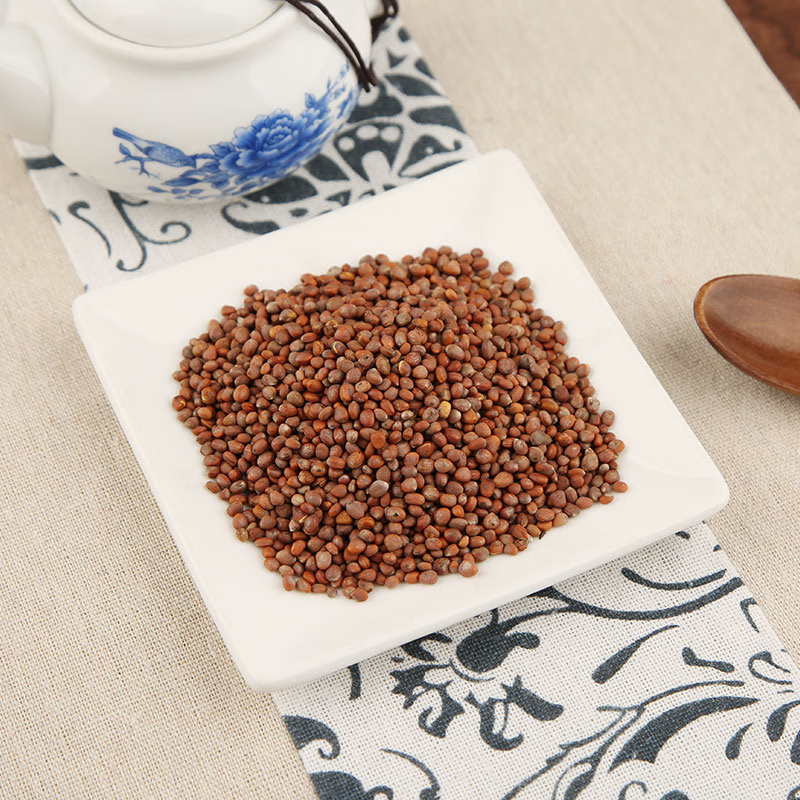




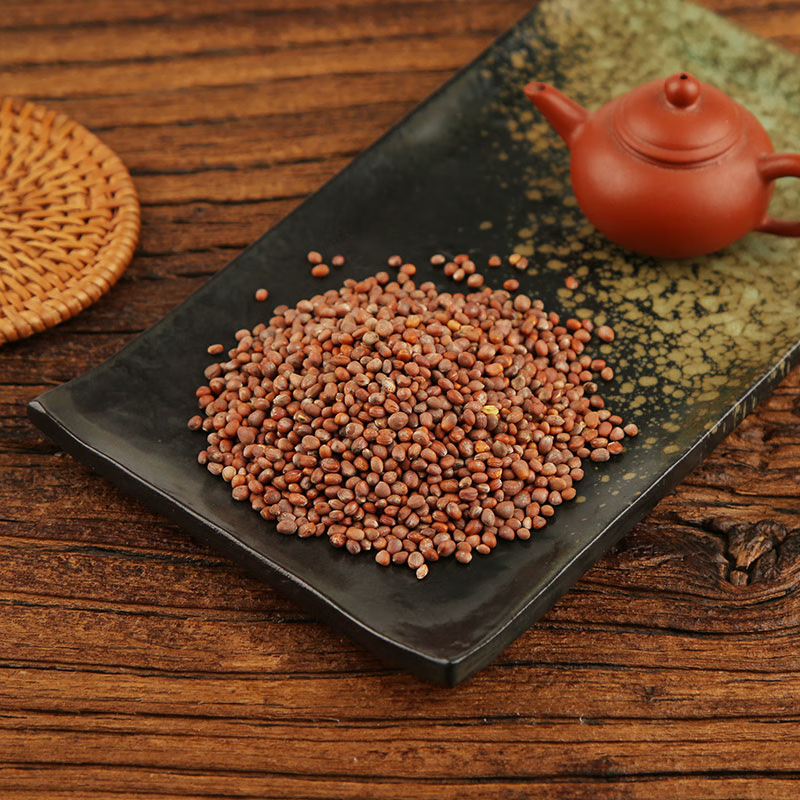
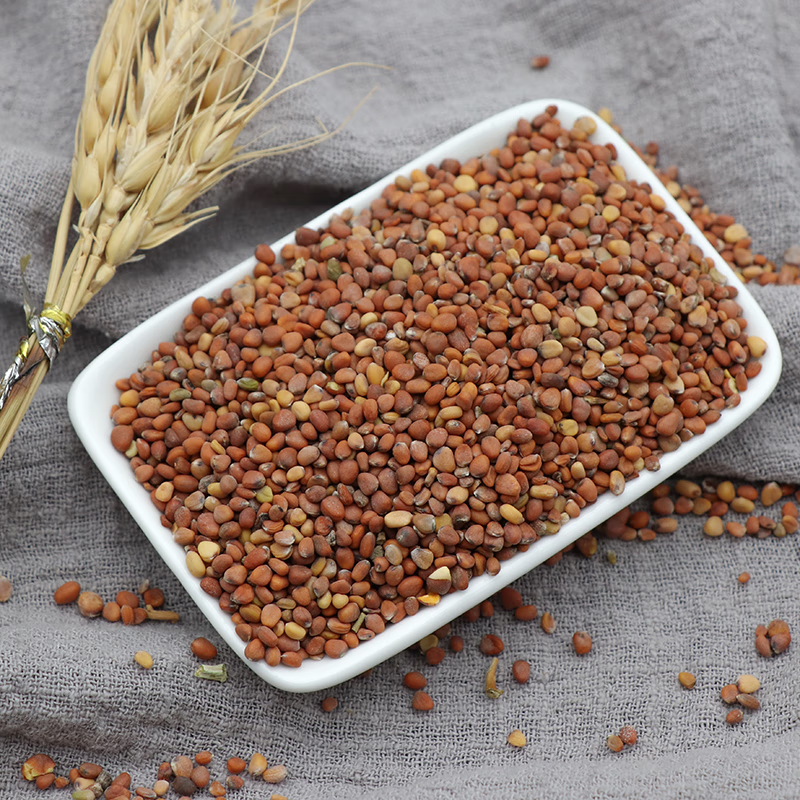

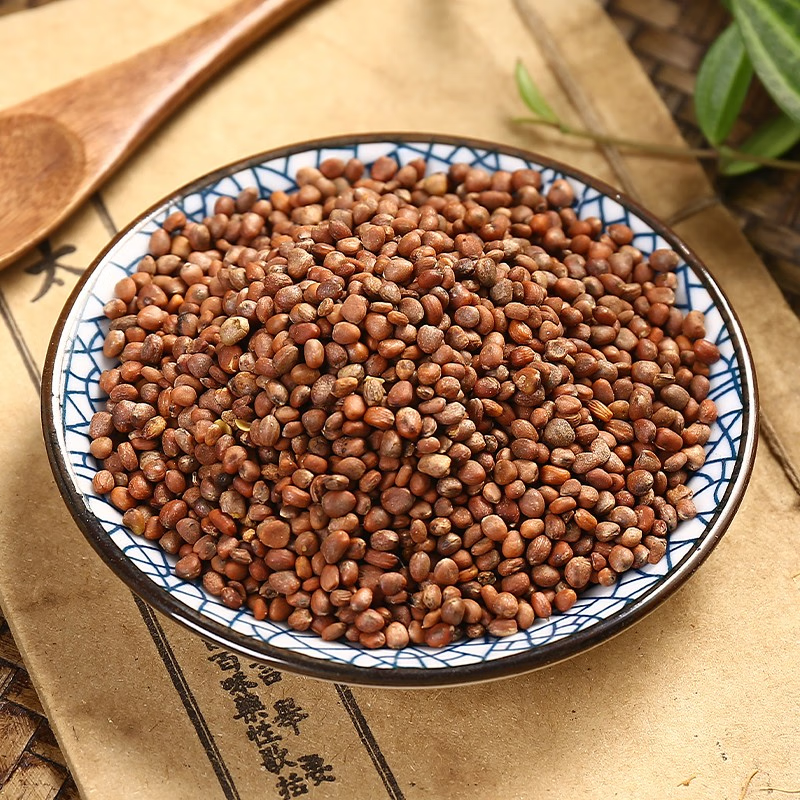
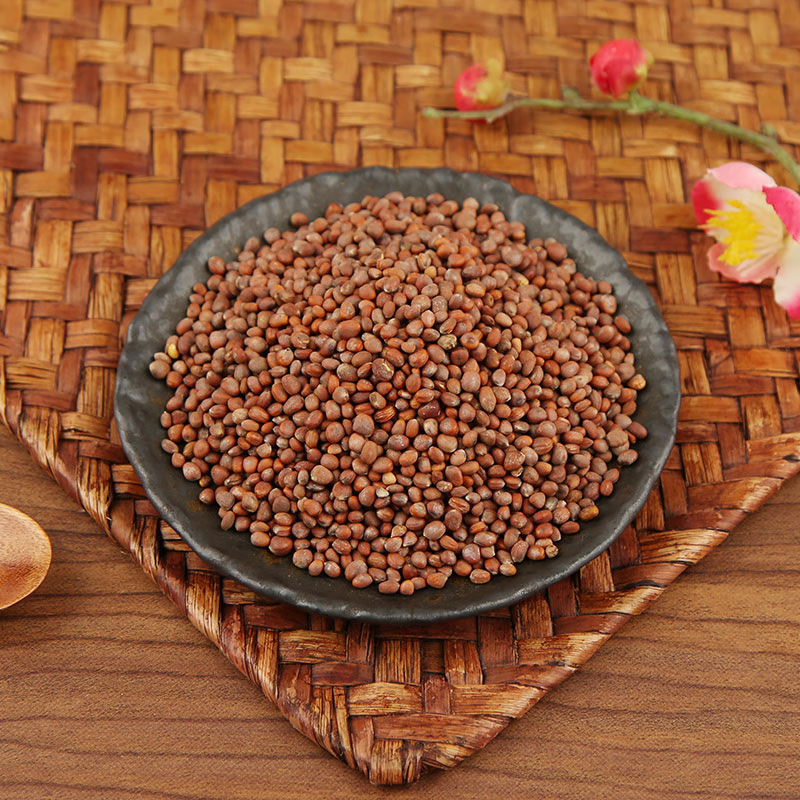
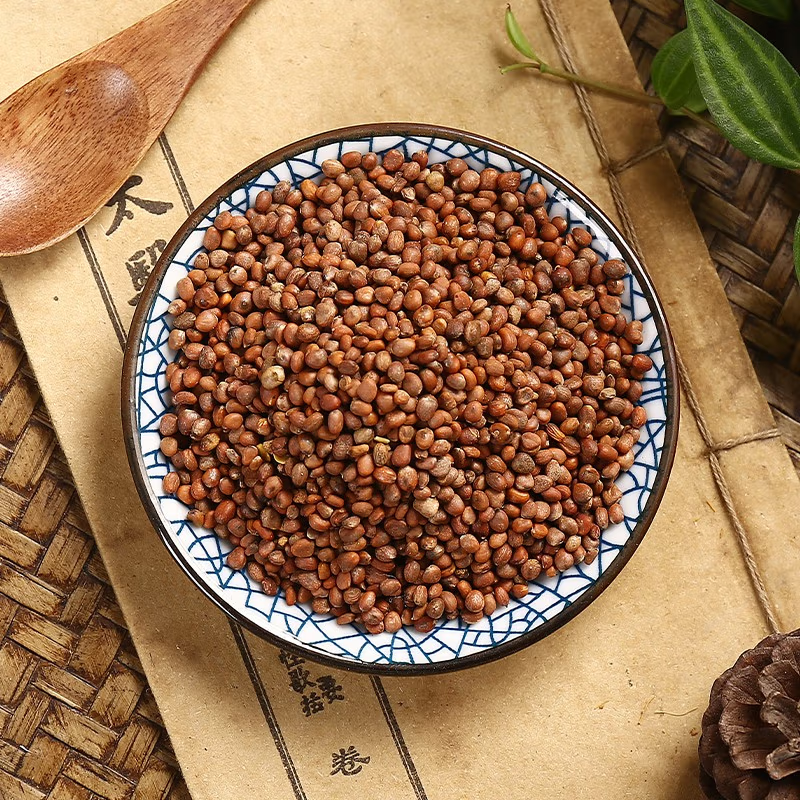
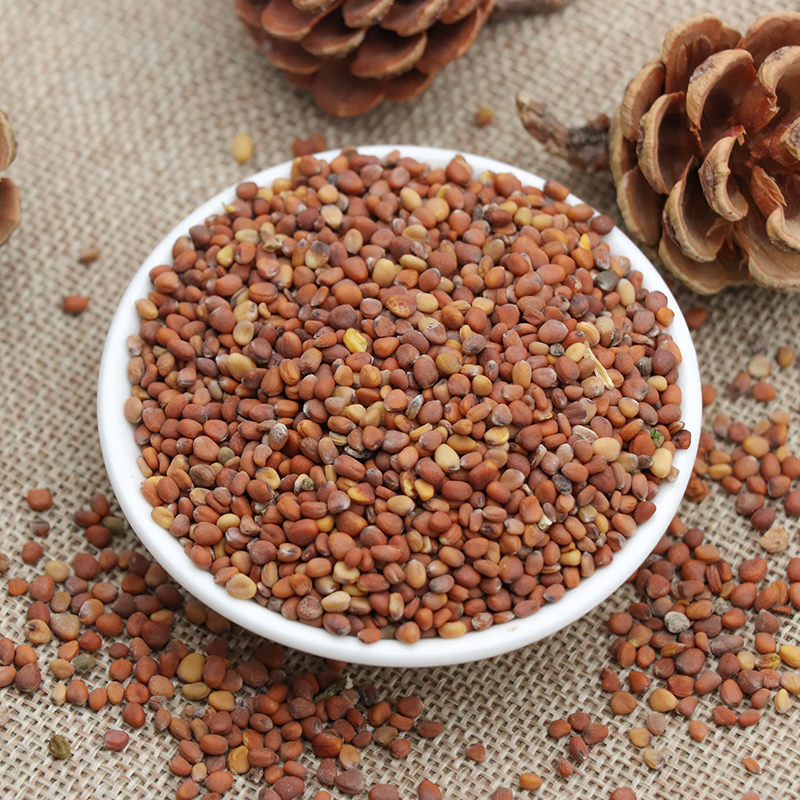

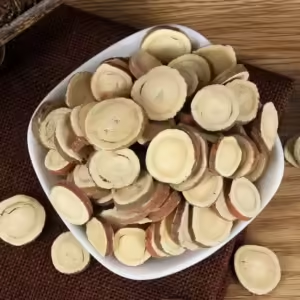
التعليقات
لا توجد توصيات بعد.